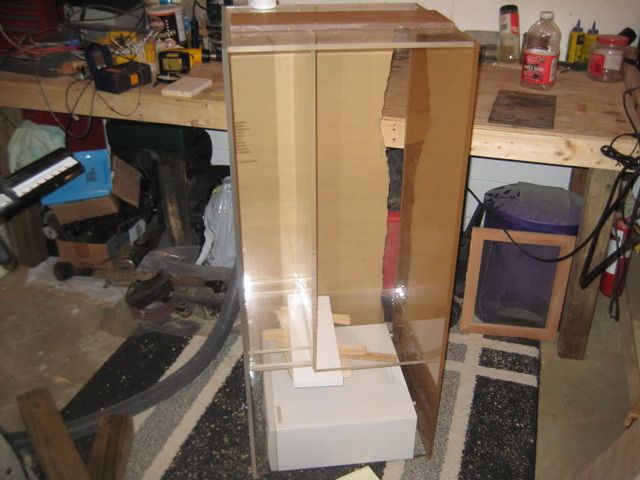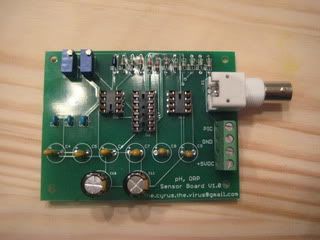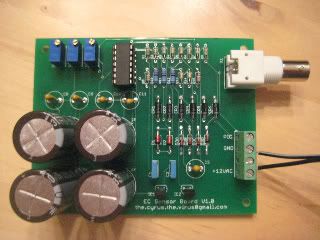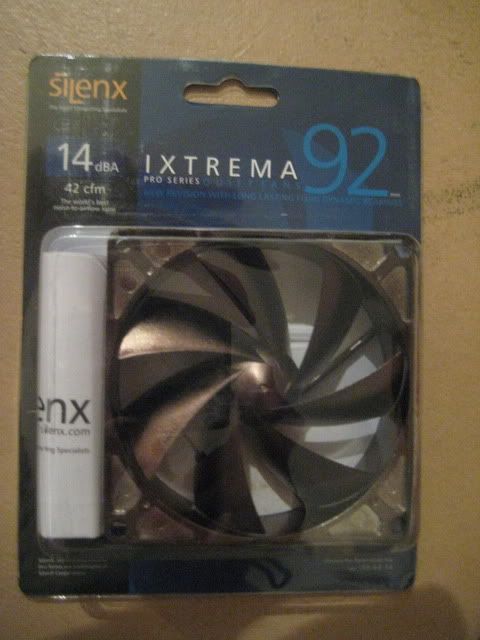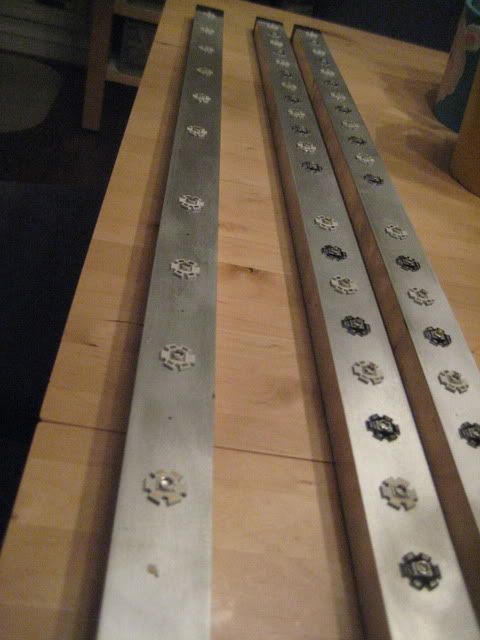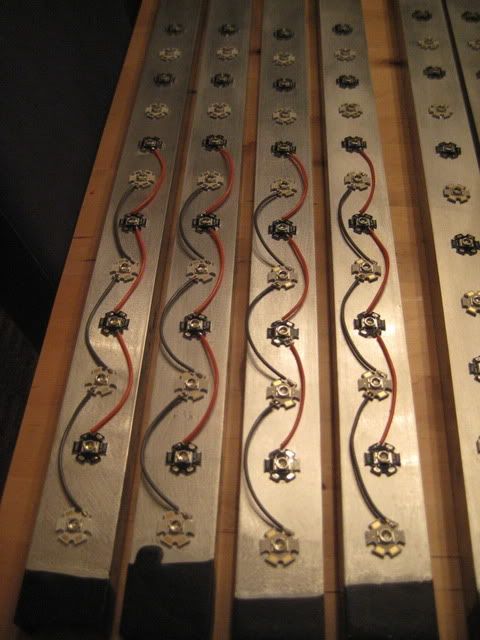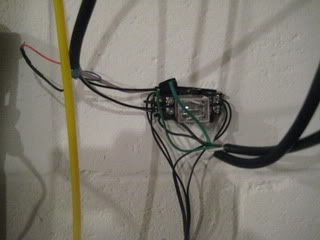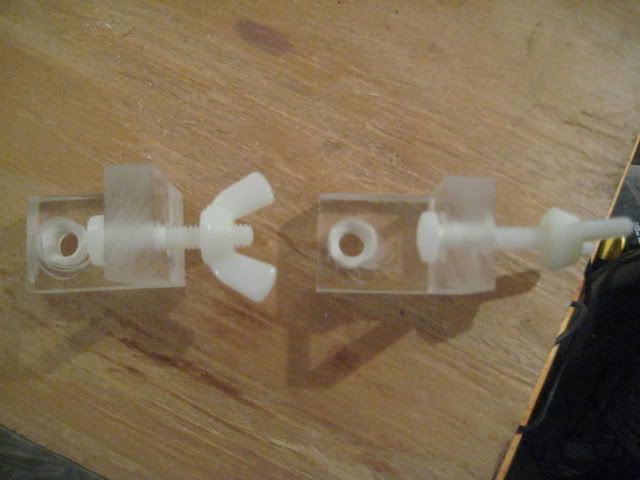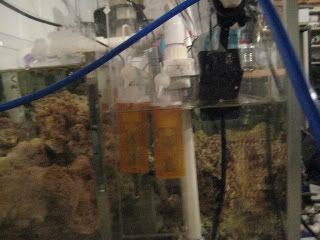I have a similar post on Reef Central, but as a fellow 856er, I thought I would also post here.
Currently I have a 90 gallon filled with air. It has moved 10 feet across the room to make space for my sump/refugium. But the delay has not been the tank or the sump, or convincing my wife that this was okay to do. The delay has been on the design and testing of the circuit.
The circuit I have created uses 8 PWM channels to drive 8 banks of 16 LEDs. There is a real time clock and the LEDs simulate sunrise/sunset. In addition I have a temperature sensor which in addtion to the clock output to a backlite LCD screen. To assist others below are my posts on other sites showing the progress/failure I have made. My solution is not perfect and could always be tweaked, but I think it will work.
Circuits postings:
http://www.microchip.com/forums/searchpro.aspx?author=cyrusthevirus&top=50
http://www.edaboard.com/ftopic358016.html
http://www.electro-tech-online.com/electronic-projects-design-ideas-reviews/95410-led-lcd-circuit-design.html
http://www.electro-tech-online.com/general-electronics-chat/103178-testing-mosfet-circuit-without-blowing.html
http://www.electro-tech-online.com/electronic-projects-design-ideas-reviews/95589-5v-3-3v-power-supply-lcd-pic-2.html#post769276
http://www.electro-tech-online.com/micro-controllers/95603-pic24-driving-fets-pwm-signals-leds.html
http://www.electro-tech-online.com/micro-controllers/104407-nfet-parallel-power-supply.html
http://www.dutchforce.com/~eforum/index.php?showtopic=27788
http://www.dutchforce.com/~eforum/index.php?showtopic=30791
In addition to having the sunrise/sunset, I can also independently control the brightness of each string.
The next steps in the LED are are to build out the actual strings of lights. They are on order so as they arrive over the next few weeks, I will post pictures of my success.

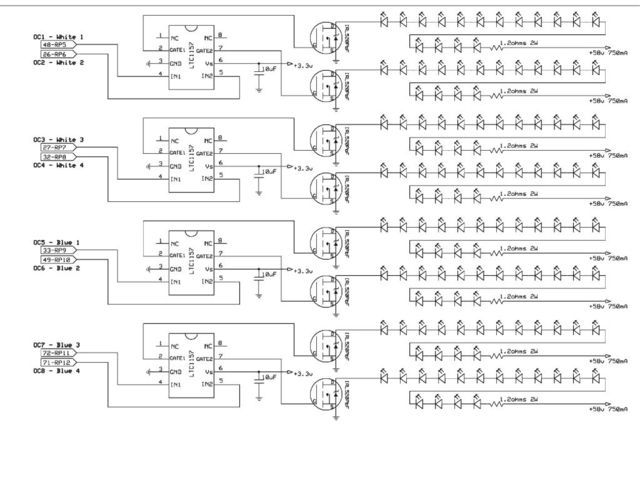
The tank:
----------------
The tank will drain into a sump located in my basement. The sump is an exact replica of the one listed here:
http://www.melevsreef.com/acrylics/sumps/80/80g_sump.html
I got lucky and was able to obtain a free pump with the ability to push ~22 feet of head.
I will post some pictures of the sump, now that it has been built and appears to hold water.
That is all for now, I will post more as I continue my progress.
Currently I have a 90 gallon filled with air. It has moved 10 feet across the room to make space for my sump/refugium. But the delay has not been the tank or the sump, or convincing my wife that this was okay to do. The delay has been on the design and testing of the circuit.
The circuit I have created uses 8 PWM channels to drive 8 banks of 16 LEDs. There is a real time clock and the LEDs simulate sunrise/sunset. In addition I have a temperature sensor which in addtion to the clock output to a backlite LCD screen. To assist others below are my posts on other sites showing the progress/failure I have made. My solution is not perfect and could always be tweaked, but I think it will work.
Circuits postings:
http://www.microchip.com/forums/searchpro.aspx?author=cyrusthevirus&top=50
http://www.edaboard.com/ftopic358016.html
http://www.electro-tech-online.com/electronic-projects-design-ideas-reviews/95410-led-lcd-circuit-design.html
http://www.electro-tech-online.com/general-electronics-chat/103178-testing-mosfet-circuit-without-blowing.html
http://www.electro-tech-online.com/electronic-projects-design-ideas-reviews/95589-5v-3-3v-power-supply-lcd-pic-2.html#post769276
http://www.electro-tech-online.com/micro-controllers/95603-pic24-driving-fets-pwm-signals-leds.html
http://www.electro-tech-online.com/micro-controllers/104407-nfet-parallel-power-supply.html
http://www.dutchforce.com/~eforum/index.php?showtopic=27788
http://www.dutchforce.com/~eforum/index.php?showtopic=30791
In addition to having the sunrise/sunset, I can also independently control the brightness of each string.
The next steps in the LED are are to build out the actual strings of lights. They are on order so as they arrive over the next few weeks, I will post pictures of my success.


The tank:
----------------
The tank will drain into a sump located in my basement. The sump is an exact replica of the one listed here:
http://www.melevsreef.com/acrylics/sumps/80/80g_sump.html
I got lucky and was able to obtain a free pump with the ability to push ~22 feet of head.
I will post some pictures of the sump, now that it has been built and appears to hold water.
That is all for now, I will post more as I continue my progress.


